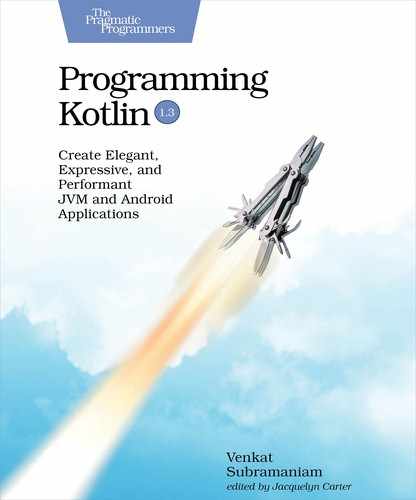Using Set
Sets are unordered collections of elements. Like the methods for creating List<T>, which has both immutable/read-only and mutable/read-write versions, you may create instances of Set<T> using setOf() or instances of MutableSet<T> using mutableSetOf(). You may also use hashSetOf() to get a reference of type java.util.HashSet<T>: linkedSetOf() for LinkedHashSet, and sortedSetOf() for TreeSet<T>.
Here’s a set of fruits, with a duplicate element:
| | val fruits: Set<String> = setOf("Apple", "Banana", "Apple") |
Since sets guarantee uniqueness of elements, the duplicate is discarded in the set created:
| | println(fruits) //[Apple, Banana] |
The instance created by setOf() is of the type Set<T> interface, but the underlying implementation, the class, is from the JDK:
| | println(fruits::class) //class java.util.LinkedHashSet |
| | println(fruits.javaClass) //class java.util.LinkedHashSet |
Just like on List<T>, there are plenty of functions on Set<T> and MutableSet<T>: operations like +, -, contains or in, and so on. The chances are the library already contains a method to accomplish the operation you’d like to carry out on a set. Take time to familiarize with the methods of Set<T>[20] and its mutable counterpart.
Instead of keeping a collection of values or objects, often we want a collection of key-value pairs, and kotlin.collections.Map<K, V> is exactly for that.
